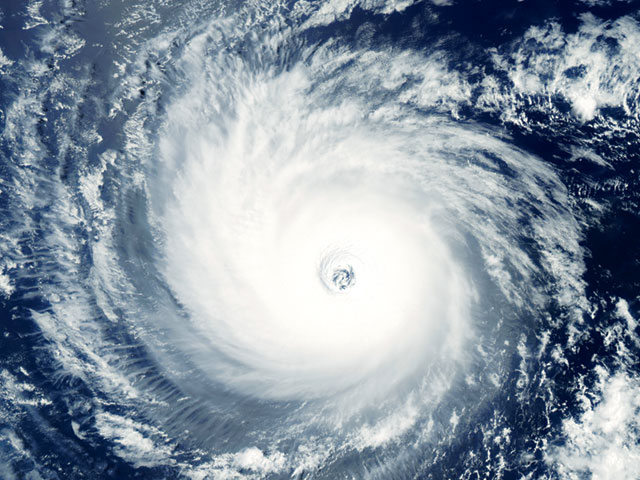Stock up, board up and look up to the skies… Hurricane Season is officially here.
Whether you’re an old pro or a South Florida newbie, hurricane season (which officially runs from June 1 through November 30) has Miami residents glued to their TVs and racing to stock up on supplies. Residents are already turning their attention to damage control, getting in touch with services that can help them with any storm damage they might experience. From roofing repair with the help of services similar to Brastin Roofing to water restoration companies, the citizens of Florida are trying their best to ensure that they are prepared for the upcoming storms. And while early forecasts by The Weather Channel predict low numbers of named storms–nine named storms, five hurricanes and one major hurricane to be specific–anyone who has been through a storm knows it’s better to be prepared than caught off guard. And this is just as important in the aftermath too. The likelihood of you experiencing extensive storm and water damage is very likely, so you may want to make sure that you have a company who specializes in this area on speed-dial in order to restore your home as soon as possible. But first, you need to prepare for the upcoming storm. Ready to get started? Here are the basics on the 2015 season.
Just The Facts
Think you know your hurricanes? Maybe not. Dr. Angela Colbert of the Patricia and Phillip Frost Museum of Science shares some of her favorites facts about these powerful weather events.
- During the life cycle of a hurricane, it can expend as much energy as 10,000 nuclear bombs. (NASA)
- One of the men who invented the Saffir-Simpson scale (Bob Simpson) that we use to classify hurricane strength category was still contributing to the field up to his passing at the age of 102!
- It is due to a special effect from Earth’s rotation and spherical shape, known as the Coriolis Effect, that give hurricanes their familiar spiral pattern.
- Hurricanes spin counterclockwise in the Northern Hemisphere and clockwise in the Southern Hemisphere due to the Coriolis Effect (no this does not apply to toilets as they are too small, I know, I checked!).
- Approximately every three-to-four years there is a named tropical system (usually a (subtropical storm) that forms off the coast of Florida before the start of hurricane season on June 1st.
- The first intentional flight into a hurricane occurred on July 27, 1943 for a storm over the Gulf of Mexico by Army Air Force Colonel Joseph Duckworth
The Eye of the Storm
Most of us in South Florida have been through the prep phase of the season more than a few times. But for those who have never experienced an actual storm the scary part is usually the actual event. So what to do during the storm? Miami-Dade County suggests the following:
- Monitor your radio or television for weather updates and instructions from public safety officials.
- Stay indoors, preferably in a room with few or no windows.
- Take your emergency kit and disaster supplies with you if you move from room to room.
- If flooding threatens your home, turn off electricity at the main breaker.
- Use flashlights, not candles or kerosene lamps, as your light source.
- If you lose power, turn off all major appliances.
- Avoid using the phone and do not take a bath or shower during the storm.
- Fight the temptation to go outside during the “eye of the storm”. There’s only a brief period of calm before hurricane force winds return.
- Keep children informed about what’s happening and watch for signs of stress.
- Keep animals in their carriers.
The Name Game
Ever wondered exactly how how and why storms get their names? According to The Weather Channel, though early meteorologists named storms after the day they struck (see the 1935 Labor Day Hurricane in the Keys) nowadays they tend more toward the Bob, Floyd or Andrew. Early 1900s Australian forecaster Clement Wragge was the first to name storms, plucking their monikers from a list of politicians he disliked, a practice that inspired the novel “Storm” which later inspired military forecasters to name Pacific storms after girlfriends and wives. Though the U.S. Weather Bureau frowned upon the idea, in 1954 the Interdepartmental Hurricane Conference and the U.S. Weather Bureau gave in to the practice. In 1979 mens names were added to the list. Today the World Meteorological Organization creates and maintains six lists, which are reused every six years. A sampling of this year’s choices include: Ana, Claudette, Henri, Ida, Joaquin,Odette, Peter, Rose,Teresa, Victor and Wanda.
Cabinet Check-List
Sure, we all know the basics. Flashlight, batteries, water…but what about the little things? Experts suggest having enough supplies for up to two weeks post-storm (and those who weathered Andrew can attest), so we went straight to the source. We asked–who else?– our friends at Publix just what to grab off their shelves pre-storm. Here are their suggestions:
- Baby food and formula
- Bottled Water – 2 gallons per person per day and 1 gallon per pet per day
- Bread
- Canned meats, pasta, fruits, vegetables, puddings and soups
- High-energy foods such as peanut butter, nuts, jelly, crackers, cookies, cereals, dried fruit and trail mix
- Ice
- Instant coffee and tea
- Pet food
- Powdered milk
- Special dietary foods
- Sport drinks and individually packaged juice
- Sugar, powdered creamer, salt and pepper
Preparing your children for a storm
A storm isn’t just about having your insurance prepared or the number of a good roofing company who can come and fix your leaking conservatory roof once the storm is over. You’ll also need to think of a way to ensure that your family is calm and safe during the storm. Young children thrive on routine and can become anxious when those day to day events are disrupted by natural disasters such as a hurricane or tropical storm. As another hurricane season approaches, it’s important that parents talk to their children about emergency situations, says Dr. Sara Rivero-Conil, a licensed psychologist with the Nicklaus Children’s Hospital Department of Psychology. A child may worry that they may become separated from their family or whether their house can withstand a storm. Here are five suggestions to help your family prepare for hurricane season:
- Create an emergency plan with your family. Discuss details such as where you would go if you needed to leave your home. Write down important phone numbers for your children or put them in your child’s phone (if applicable).
- Prepare for the storm. If a storm is approaching, include your children in the preparations such as checking off items from your preparedness list, testing flashlights and packing. Remind your teenage children to fill their cars with gas.
- Watch television together. Television, in limited quantities, is a good way to learn about the impending storm. Dr. Sara Rivero-Conil cautions that watching too much news coverage can also increase a child’s anxiety. Watch small amounts of news together for updates and then switch off the TV and enjoy other family-centered activities, such as board games, to help create a balance and decrease anxiety. Remember, graphic images of storm damage can also be upsetting to young children.
- Get ready to go. If your family lives in an evacuation zone, be prepared by having your children help with packing.
- Work together after the storm. Once the storm has passed, include your children in the house cleanup. If you know that your house has been damaged by the storm at all, contact a Storm Damage Repair: La Crosse Wisconsin company to repair the damage before the children see it. You don’t want your children to get upset by seeing the damage that was done to your house. It will cause unnecessary stress and upset so try and get it repaired before they come home. Set aside time to talk with your children about how they feel after the storm. Try to reassure them that the worst of it is over and tell them how brave they have been. Although they may not admit that they’re scared, they probably are!





 Deering Estate
Deering Estate
 Massage Envy South Miami
Massage Envy South Miami
 Calla Blow Dry
Calla Blow Dry
 My Derma Clinic
My Derma Clinic
 Sushi Maki
Sushi Maki
 Sports Grill
Sports Grill
 The Healthy Kitchen
The Healthy Kitchen
 Golden Rule Seafood
Golden Rule Seafood
 Malanga Cuban Café
Malanga Cuban Café

 Kathleen Ballard
Kathleen Ballard
 Panter, Panter & Sampedro
Panter, Panter & Sampedro
 Vintage Liquors
Vintage Liquors
 The Dog from Ipanema
The Dog from Ipanema
 Rubinstein Family Chiropractic
Rubinstein Family Chiropractic
 Your Pet’s Best
Your Pet’s Best
 Indigo Republic
Indigo Republic




 ATR Luxury Homes
ATR Luxury Homes


 2112 Design Studio
2112 Design Studio
 Hamilton Fox & Company
Hamilton Fox & Company
 Creative Design Services
Creative Design Services
 Best Pest Professionals
Best Pest Professionals
 HD Tree Services
HD Tree Services
 Trinity Air Conditioning Company
Trinity Air Conditioning Company
 Cisca Construction & Development
Cisca Construction & Development
 Mosquito Joe
Mosquito Joe
 Cutler Bay Solar Solutions
Cutler Bay Solar Solutions


 Miami Royal Ballet & Dance
Miami Royal Ballet & Dance
 Christopher Columbus
Christopher Columbus
 Pineview Preschools
Pineview Preschools
 Westminster
Westminster
 Carrollton
Carrollton
 Lil’ Jungle
Lil’ Jungle
 Frost Science Museum
Frost Science Museum
 Palmer Trinity School
Palmer Trinity School
 South Florida Music
South Florida Music
 Pinecrest Orthodontics
Pinecrest Orthodontics
 Dr. Bob Pediatric Dentist
Dr. Bob Pediatric Dentist
 d.pediatrics
d.pediatrics
 South Miami Women’s Health
South Miami Women’s Health

 The Spot Barbershop
The Spot Barbershop
 My Derma Clinic
My Derma Clinic




 Miami Dance Project
Miami Dance Project

 Rubinstein Family Chiropractic
Rubinstein Family Chiropractic
 Indigo Republic
Indigo Republic

 Safes Universe
Safes Universe
 Vintage Liquors
Vintage Liquors
 Evenings Delight
Evenings Delight





 Atchana’s Homegrown Thai
Atchana’s Homegrown Thai
 Baptist Health South Florida
Baptist Health South Florida

 Laser Eye Center of Miami
Laser Eye Center of Miami
 Visiting Angels
Visiting Angels
 OpusCare of South Florida
OpusCare of South Florida

 Your Pet’s Best
Your Pet’s Best





 HD Tree Services
HD Tree Services
 Hamilton Fox & Company
Hamilton Fox & Company


 Creative Design Services
Creative Design Services